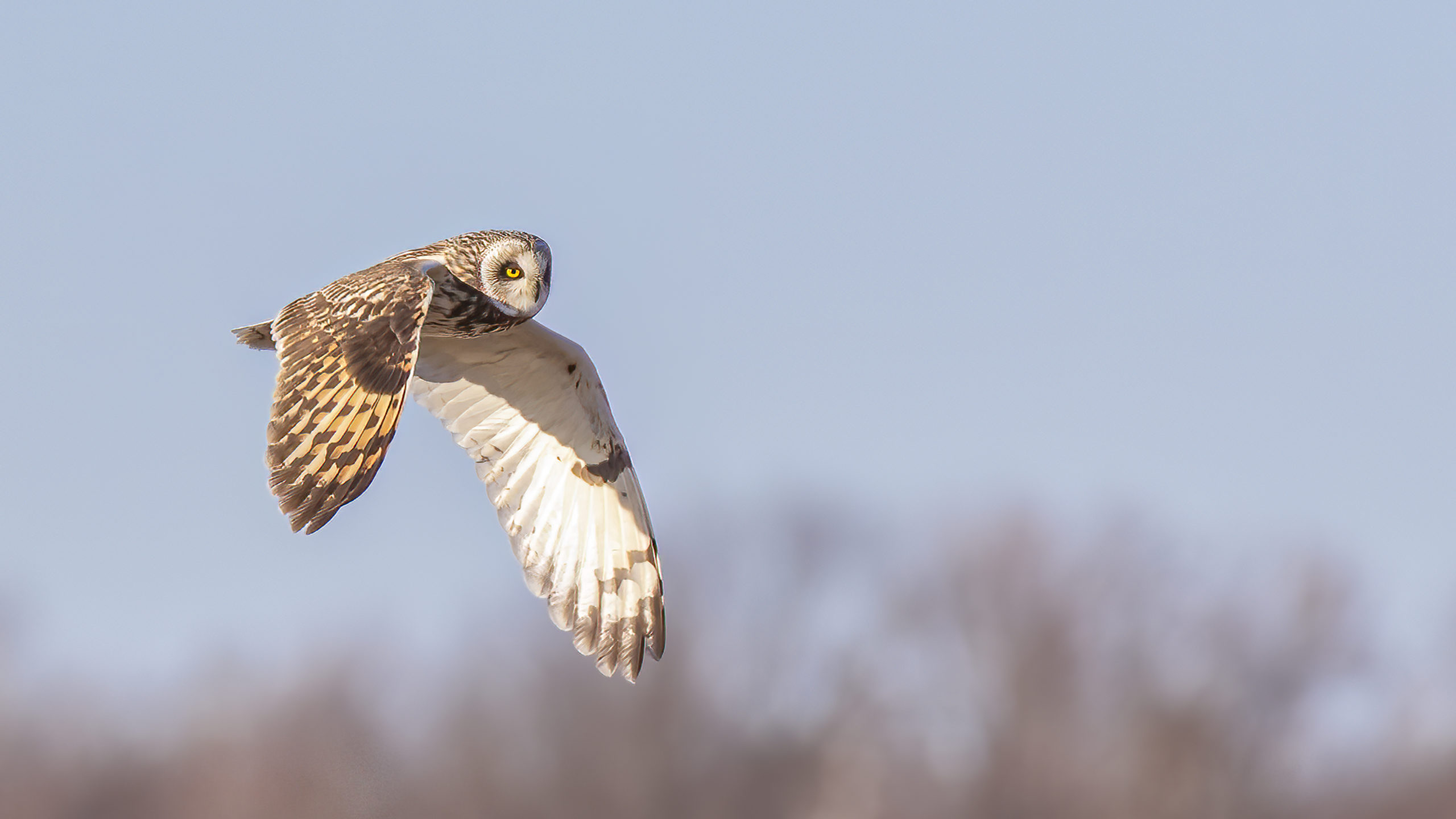Dear friend,
I know you’re likely inundated with requests and prompts to take action, speak out, get involved, and otherwise support important causes that need us. It’s obvious there is no current shortage of critical issues involving social and environmental injustices made possible by a system that many of us feel strongly moved to shape for the better. This issue is no different, as it threatens over a thousand species of North American birds.
2020 has been a whirlwind year already for birds, beginning with the Trump Administration’s undercutting of the Migratory Bird Treaty Act in January. In the face of the already unprecedented stressors and threats facing birds, we can’t afford to lose conservation laws.
Today, we’re asking you to share your voice for birds. Submit a comment and urge the federal government to protect this critical conservation law.
For birds and people,

Heather Good
Executive Director
Inspiration for Protecting Birds
Below is a piece written by Alison Világ, Michigan Audubon’s Outreach & Education Specialist and Piping Plover Monitor at Whitefish Point Bird Observatory. One of Alison’s first field positions was with Michigan Audubon as a Kirtland’s Warbler Tour Guide. She continues to serve our mission of connecting birds and people for the benefit of both with her unique perspective, skills, and voice.
Alison Világ: On the removal of the incidental take provision of the Migratory Bird Treaty Act
Until July 20th, you have the opportunity to add your perspective to the collection of voices concerned about the removal of the incidental take provision of the Migratory Bird Treaty Act (MBTA), a tool that is the most usable defense we have to protect birds from large scale industrial harm. With the proposed amendment, though, incidental take would only cover intentional harm of birds — and not the damaging collateral spawned from wind warms, uncovered oil pits, chemical spills, mining, and the like — which kill an estimated 453 million-1.1 billion birds per year in the United States.
Within the last few months, birds — and in particular, a soaring participation in birdwatching — have taken a prominent and refreshingly positive foothold in the news cycle. More people are noticing and appreciating birds, and also finding restoration in their natural rhythms during a period when our own have been disrupted. It is deeply troubling that, during this time, the Department of the Interior is moving in a direction that pinions the current longstanding protections birds have through the Migratory Bird Treaty Act (MBTA).
For the last decade, I have worked in the bird conservation field, and since 2019, I have been at Whitefish Point Bird Observatory (WPBO) in Paradise, Michigan. This, a program of Michigan Audubon, has for nearly 50 years collected standardized data on hawk, owl, and waterfowl populations and migrations. I deal most directly with the counting of migrating waterbirds — geese, ducks, grebes, loons, shorebirds, and Sandhill Cranes. During the busiest periods of avian transit, I tally thousands of birds per day, and within the span of a season, my census can record nearly 100,000 individual birds. To witness this invokes awe to the hobbyist and the professional alike.
Since avian research and conservation have become so deeply embedded in my background, I have developed a strong appreciation of birds: they are a natural resource whose recreational, aesthetic, scientific, and economic values are well-established. My background also provides me with a front-row seat to avian population trends. There are recent successes — our national bird, Bald Eagles, have made a comeback from precipitous decline and recolonized many former strongholds. When I was growing up in the early 2000s in southern Michigan, there were no nesting eagles in my county. Today, there are. Circa 1900, Sandhill Cranes were almost extinct; now, in several states, they have recovered to a level where they provide sustenance both physical, through legal, permitted harvest, and spiritual, to anyone who has stood beneath a sky filled with cranes and their voices.
But avian decline pervasively outweighs these success stories. In September 2019, Cornell scientists published Decline of North American Avifauna in Science (Rosenberg et al 2019). Their findings were disquieting: since 1970, North American bird populations have experienced a net loss of nearly 3 billion breeding birds, which represents a 29% decline. To lessen the protections afforded through the MBTA’s incidental take provision amidst such circumstances defies both science and logic and is inherently suspicious to anyone invested in a conservation field. If anything, birds need more dedicated protection right now — not less.
The precedent for the MBTA’s provision for incidental take can be found in the Act’s opening lines: “Unless and except as permitted by regulations…it shall be unlawful at any time by any means or in any manner, to pursue, hunt, take, capture, kill, attempt to take, capture or kill, possess, offer for sale, sell, offer to barter, barter, offer to purchase, purchase, deliver for shipment, ship, export, import, cause to be shipped, exported or imported, deliver for transportation, transport, cause to be transported, carry, or cause to be carried, or receive for shipment, transportation, carriage, or export, any migratory bird, or any part, nest or egg of any such bird included in the terms of the conventions.” (16 U.S.C. §703.)
For decades, this “take” provision has been implemented as a means for the United States Fish & Wildlife Service (USFWS) to define reasonable and effective measures that the oil, gas, timber, mining, electrical utility, and chemical industries can take to avoid undue harm to migratory birds. These industrial activities play a large role in the mortality of birds protected by the MBTA: the USFWS estimates 4 billion birds to be killed each year, and of these, industry is a substantial contributor, estimated to kill 453 million to 1.1 billion birds per year in the United States. This stems from poisoning (72 million birds), electrocution or collisions with power lines (>28 million birds), oil pits (750,000 birds), and wind turbines (>573,000 birds.) (U.S. Fish and Wildlife Service data) In addressing this, the MBTA has been used more as preventative than punishment: in the last 2 decades, the act has been employed as a punitive measure just 14 times (Scott & Folds, 2019), for egregious avian mortality events, like the 2010 BP Deepwater Horizon oil spill. In this incident, 36% of the northern Gulf’s Laughing Gulls perished, as did 15% of its Royal Terns, and 12% of its Brown Pelicans (Haney, Geiger & Short 2014). By using the MBTA provisions for incidental take in this event, $100 million in fines was collected for restoration of the resultantly damaged habitat—which, of course, supports much more than just birds.
More frequently, the MBTA has been used to proactively form policies and practices that protect wild birds from these large-scale mortality events. Some examples of these which relate specifically to the major industrial death sources in the former paragraph include: guidelines for power companies so that lines are distanced in a way to reduce avian deaths and collisions (Avian Powerline Action Committee); FAA regulations that reduce the impact of communications towers on migrating birds (U.S. Dept. of Transportation, 2015); establishing protocol for wind turbine location and technology so that they are less hazardous to migrating birds (U.S. Fish and Wildlife Service, 2012); to change oil pit practices so that open pits are covered. These actions allow the USFWS to directly, strategically, address incidental take while cultivating a culture of bird protection, conservation, and value.
The current proposal I am writing about eliminates the aforementioned provisions allowed by MBTA’s application of incidental take by saying “…injury to or mortality of migratory birds that results from, but is not the purpose of, an action (i.e. incidental taking or killing) is not prohibited by the Migratory Bird Treaty Act (85 FR 5915). The basis for this amendment maintains that the MBTA’s original purpose was to regulate hunting, and also that pursuing incidental take could render average Americans criminals. In response to the first point, hunting participation has been declining. The USFWS’s 2016 National Survey of Fishing Hunting, and Wildlife-Associated Recreation reports that a mere 5% of Americans hunt (U.S. Fish and Wildlife, 2016). And to address the second, there is no precedent that the MBTA has been weaponized to transform average Americans into criminals. Perhaps, the clause would benefit all parties with better codifying, but it should not be eliminated. This part of the MBTA is a valuable tool that incentivizes industry to apply bird-friendlier practices. Industry has a generally poor track record of fair treatment towards the communities they occupy—both human and natural. When protections are in place that protect birds and their habitats, we also uphold human health and well-being and healthy environments. What is good for birds is usually good for people, too.
About the time that the Cornell report on bird decline was released last fall, there was a day in early October at WPBO where, in a few hours, I counted over 400 Common Loons. I was surrounded in all directions and heights of the sky by groups of birds riding the north wind south, and in those moments, I was caught up in the beauty and magnitude of bird migration, and grieving, too, for the uncertainty of the perpetuity of what I was witnessing. In closing, I think it is prudent to evaluate the mission of the USFWS-“working with others to conserve, protect, and enhance fish, wildlife, and plants and their habitats for the continuing benefit of the American people,” and the dissonance between this and the proposed elimination of the MBTA’s incidental take provision, which signals to industrial and commercial interests that there will be lax accountability when their activities create substantial, gratuitous incidental take.


